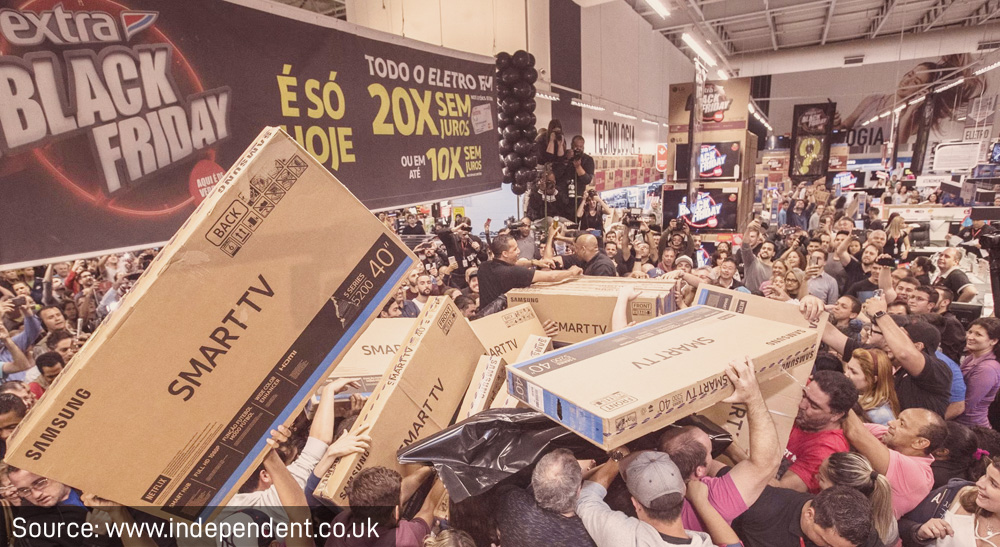The moment has finally arrived. Thousands of South Africans who have been saving up for Black Friday in the hopes of snagging a great deal on a new laptop, big-screen television, or a mountain bike will be descending on shops or clogging up the internet superhighway this weekend to bring home that big purchase.
According to market analytics company GfK, 57% of South African consumers postpone a purchase until the product is on sale or there is a special offer.
“With many consumers holding back on spending in anticipation of special offers, Black Friday creates the opportunity to capitalise on delayed spending and pent-up demand,” says GfK’s retail lead for South Africa, Nikki Quinn.
But as Alanis Morissette’s hit song “Ironic” reminds us, the darndest things happen when you least expect or need them. Having insurance in place just in case something unforeseen happens to that sparkly new item is something consumers are well advised to consider.
Ernest North, co-founder of Naked, the fully digital insurance platform, says the purpose of insurance is to protect you against unexpected incidents, such as theft and accidents.
“For example, if a criminal steals your brand-new bike just a week after you bought it, you’ll be able to claim from insurance. Likewise, if you drop your TV and crack the screen while you’re unloading it at home, or it gets fried by a power surge.”
Insurance vs warranty
The first thing that a savvy shopper needs to understand is the difference between insurance and a warranty.
North explains that insurance differs from a warranty that covers manufacturing defects and repair or replacement if your new device or appliance breaks because of a manufacturer’s defect.
“Your warranty will generally only cover issues that arise when you use your product as intended and not accidental damage,” he says.
“This is why it’s a good idea to have insurance even if your newly bought item is still within its warranty period.”
Covering the bases
North advises that insurance must start the moment you walk out of the shop with your new item or take possession of the item from a courier.
He says it is wise to insure your newly bought items for what it will cost to replace them today.
“If you got a spectacular 40% discount on the fridge of your dreams, insure it for the usual retail price. That will ensure you won’t be out of pocket if you need to replace it when the sales are over.”
When it comes to insuring your new possession, you can either add it to your home contents policy (if you already have one) or purchase standalone single items cover. North says the latter type of cover is ideal if you have only one or two items of significant value you want to insure.
On the move
If you order something online or have it delivered, your new item should be insured the moment it arrives and is inside your home.
If the item is stolen or damaged while in transport or is left outside and somebody steals it or it is damaged by water, it would be considered a delivery failure, and it will be the responsibility of the retailer or courier.
North says if you have a home contents policy, you’ll need to increase the total amount for which you are insured.
“For example, if you buy a R20 000 refrigerator, you won’t have to specify it, but you will only have enough home contents cover if you increase your total insured amount after you bought it.”
He adds that some insurers require that you specify portable items (such as a mountain bike, expensive jewellery, or a watch) on your home contents policy for it to be covered against accidental damage or loss if you leave your home with them.
In this instance, cover will start immediately. If you decide to go with single item cover, the new purchase will be covered once the first payment on the policy has been made.
If you buy something in-store and transport it yourself, as mentioned above, if you have a home contents policy, you’ll need to increase your total amount of cover.
North says if is a bulky item that is not easy to move, such as a refrigerator, it’s important to note that you will be covered for up to R5 000 (and a maximum of 20% of your overall level of cover) during transport.
“As such, it’s usually better to have the retailer handle delivery. Once the item is inside your home, you will be covered as per usual,” he says.
If it is a portable item that is easy to move, you will have full cover as soon as you have specified it.



